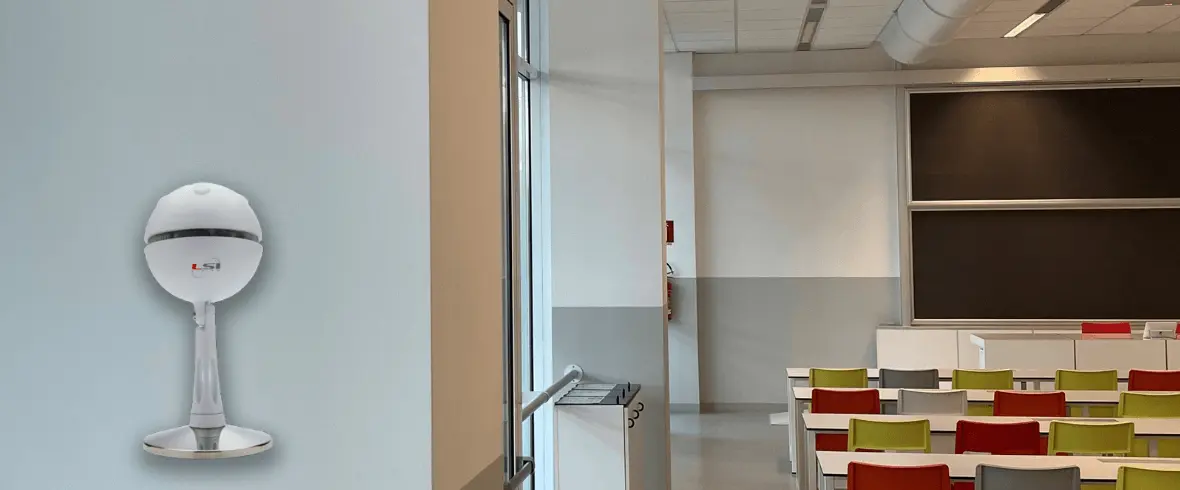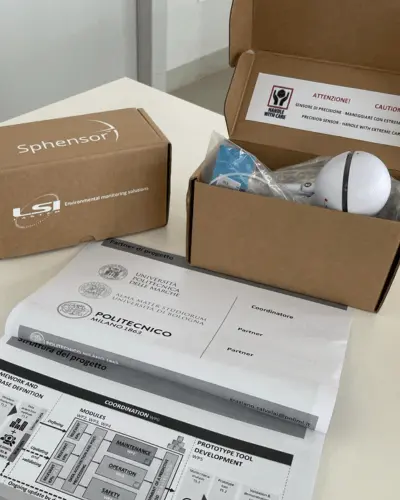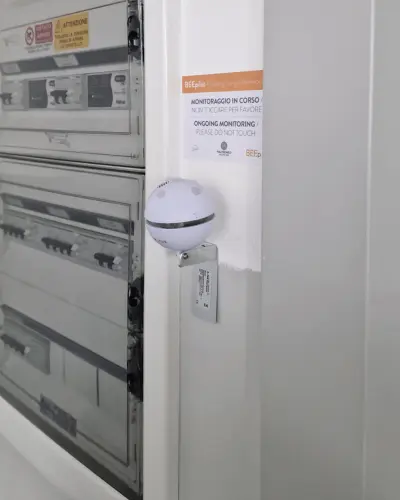The DigitMan project chose the Polytechnic of Milan – Polo Territoriale di Lecco as a case study. The two sensorised classrooms are used as a test bench, with the aim of providing replicable, scalable and adaptable solutions also to other realities and first applied in the classrooms of the other two partner universities.
DigitMan project: how to improve the well-being of built environments with Sphensor

The DigitMan project, literally “Occupant-based DIGITal predictive MANagement to improve the built environment”, was funded by MIUR – Ministry of Education and Merit – (project code: 2022JMRX2A) within the PNRR through the 2022 call for PRIN (Projects of Relevant National Interest). It is an initiative that involves Polytechnic University of Marche, Polytechnic of Milan and the University of Bologna. The primary objective of this project is to improve the quality of constructed buildings, with a focus on universities.
Sphensor: the key to optimised environmental management
The environmental monitoring system implemented in the DigitMan project is based on LSI LASTEM’s Sphensor sensors. These advanced devices provide accurate data on environmental comfort, including parameters such as temperature, humidity and lighting, ensuring precise and reliable data collection.The Sphensor sensors, installed in two university classrooms on the Lecco Campus of the Polytechnic University of Milan, allow to provide a detailed overview of the environmental conditions within these classrooms. This approach allows for an in-depth evaluation of various parameters, providing a clear picture of the environment’s performance and possible optimisations.
Direct relationship between maintenance and monitoring
The implementation of maintenance interventions plays an important role in improving the quality of the internal areas of buildings. In the context of this strategy, the introduction of Sphensor sensors becomes fundamental to demonstrate a cause and effect relationship in plant optimisation. In practice, the installation of sensors not only offers accurate monitoring of environmental conditions, but also helps to tangibly highlight how maintenance actions can have a positive impact on the overall quality of indoor spaces, creating a cycle of continuous improvement. This synergy between maintenance and monitoring represents an advanced approach to ensure healthier and more optimised indoor environments.
Focus on safety, management and environmental comfort
The DigitMan project focuses on several key aspects, including safety, management and environmental comfort.
The safety concept within the project aims to ensure a protected and manageable environment in emergency scenarios. At the same time, attention is paid to the general management of the environments, optimising resources and facilitating efficient use of space. Furthermore, environmental comfort and the proper functioning of the building imply the promotion of conditions that promote the people’s well-being, contributing to their comfort and improving the overall quality of the building experience.
Case study: Politecnico di Milano on the front line
Indoor Cube: a complete view of the built environment
Thanks to the Indoor-Cube cloud platform, it is possible to access the data from the Sphensor sensors installed in the rooms from any internet station. In the context of the DigitMan project, a monitoring project was developed that allows the creation of projects based on specific environments, areas and buildings. This approach facilitates an integrated view and comparison between different areas, greatly simplifying analysis, detailed report generation and immediate management.
Conclusion
The DigitMan project using Sphensor multiparametric sensors represents a significant step towards creating safer, more manageable and comfortable environments. The collaboration between academic institutions and companies like LSI LASTEM paves the way for innovative solutions that could revolutionise the buildings industry.


Products used
The following products were used in the case study:
- PRMPB0402: Sphensor sensors for measuring temperature, relative humidity, illuminance in 5 directions;
- PRMPA0423: Sphensor sensors for measuring CO2, VOC, particulate matter (1, 2.5, 4, 10);
- TXRGB1101: Sphensor Gateway for receiving sensors via 2.4 GHz and 868 MHz radios;
- SWCLA4200: Indoor Cube subscription for cloud management of the sensor network;
- SWCLA4020: Indoor Cube Monitoring Project subscription for the creation of an articulated project of the sensor network.
